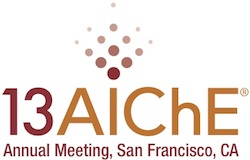

Khachatur V. Manukyan1, Allison Cross1, Jeff Miller2 and Eduardo E. Wolf 1*
1Department of Chemical & Biomolecular Engineering, University of Notre Dame, Notre Dame, IN, 46556
2Chemical Sciences and Engineering Division, Argonne National Laboratory, Argonne, IL, 60429
Hydrous hydrazine (N2H4·H2O) is considered a promising liquid hydrogen storage material owing to the high content of hydrogen (8%) and the advantage of CO-free H2 produced. We employ a simple, surfactant-free liquid-phase reduction of Cu, Ni and Fe salts (e.g. nitrides, chlorides) to produce nanostructured FeNi/Cu materials for hydrous hydrazine decomposition. Synthesis of nanomaterials includes reduction of copper salt by N2H4, followed by rapid reduction of iron and nickel salts by NaBH4. Produced nanoparticles were characterized by XRD, BET, SEM/TEM, XPS, XANES/EXAFS techniques and tested for hydrous hydrazine decomposition at temperatures of 40-70oC. It is shown that the microstructures of resulting FeNi/Cu materials depend on synthesis temperature and concentrations of salts in solution. Experiments show that solely copper nanoparticles (10-20 nn), produced in the first stage were not able to decompose hydrous hydrazine. The FeNi alloy formed on Cu particles during the second reduction stage show activity for decomposition of hydrous hydrazine even at 40oC. However, decomposition products contain ammonia, nitrogen and hydrogen. The selectivity to hydrogen is increased to ~100% with growth of temperature to 70oC. The catalytic performance of these materials primarily depends on the structure of NiFe layer, which may be controlled by simple changing of NiFe:Cu ratio. Investigation of catalytic performance for bi- and tri-metallic materials show that NiFe alloy could be responsible for selective decomposition of hydrous hydrazine. However, the main active metal is nickel. Alloying of nickel with iron coupled with favorable dispersion effect of copper nanoparticle remarkably enhances the catalytic conversion and selectivity of hydrogen evolution.
